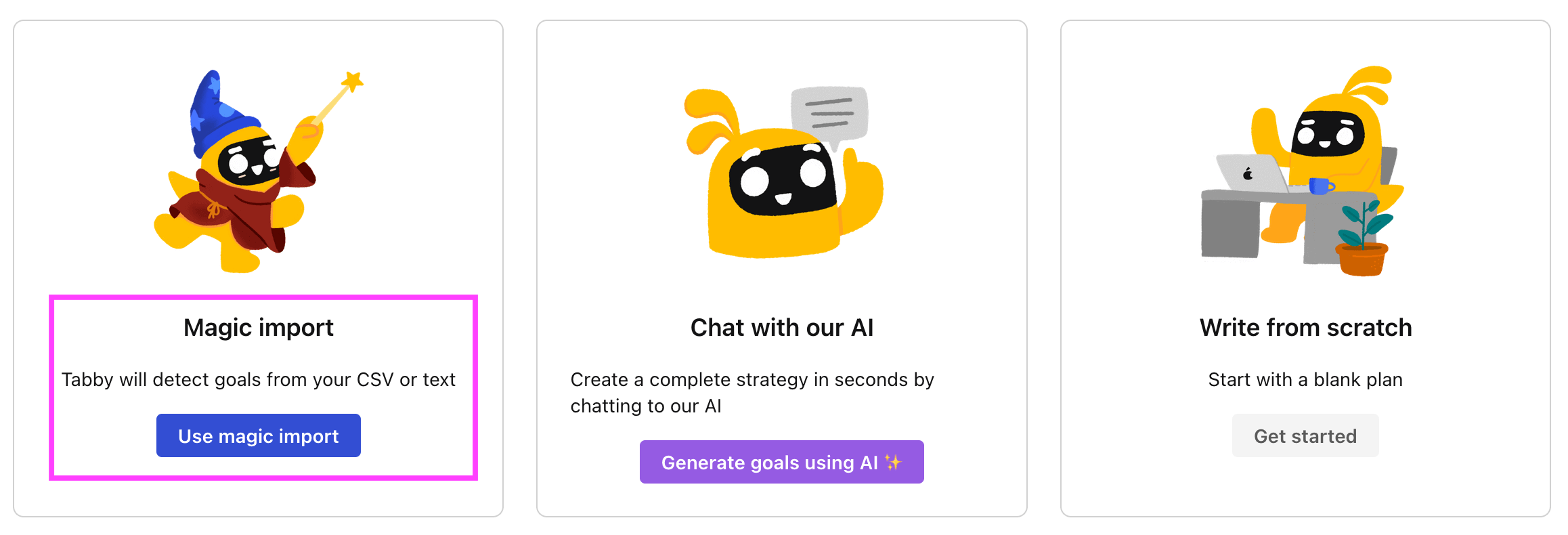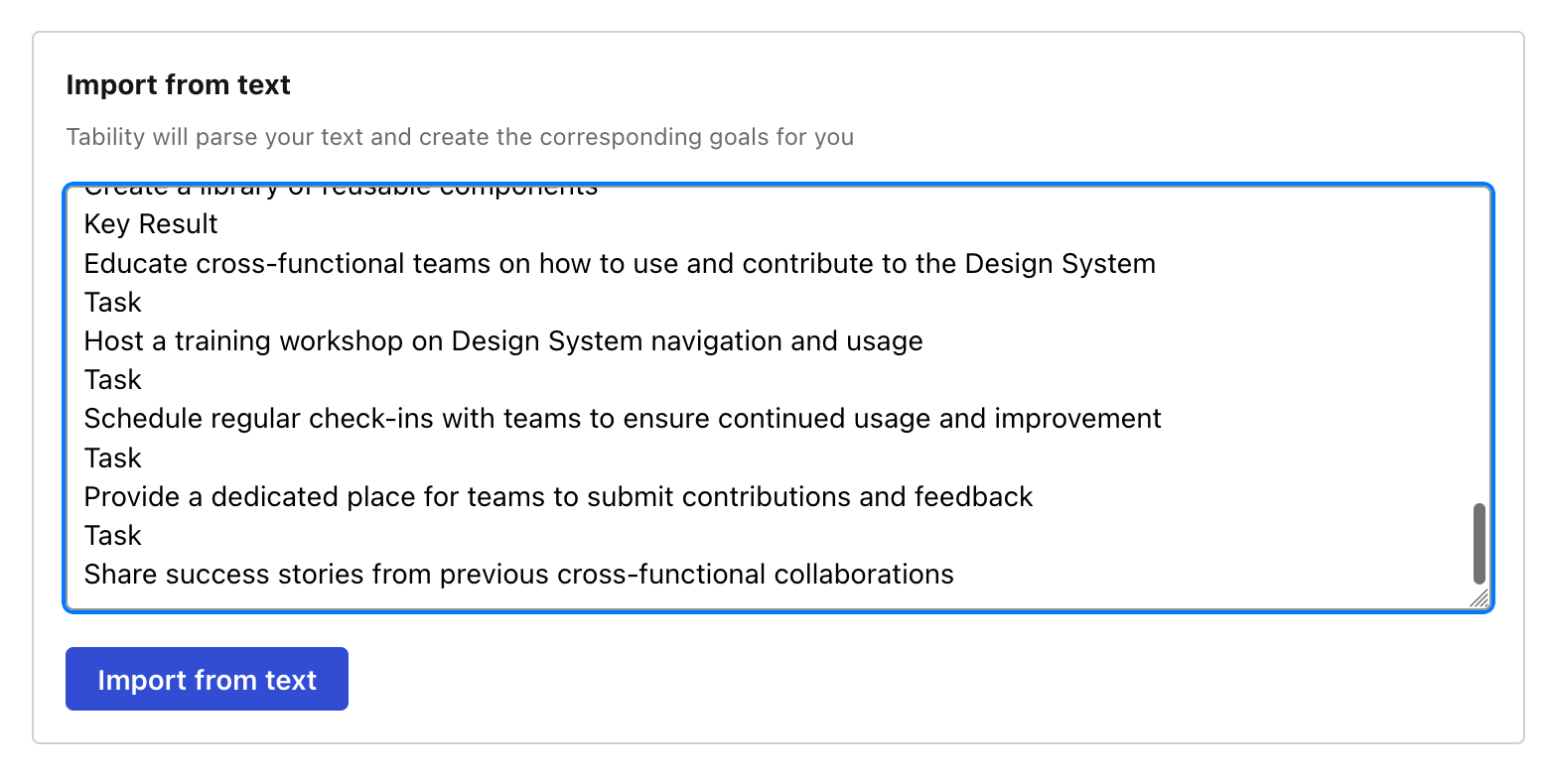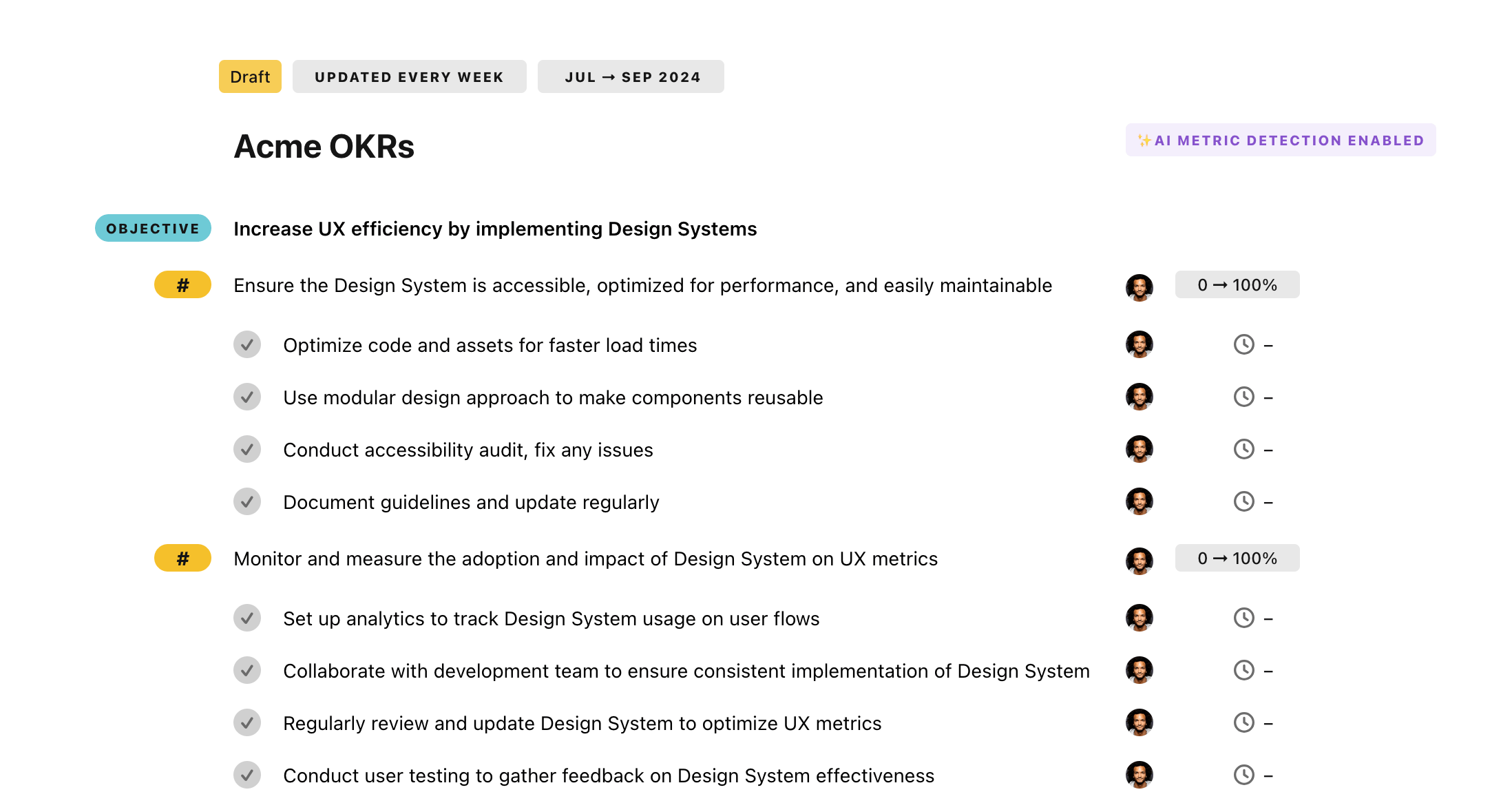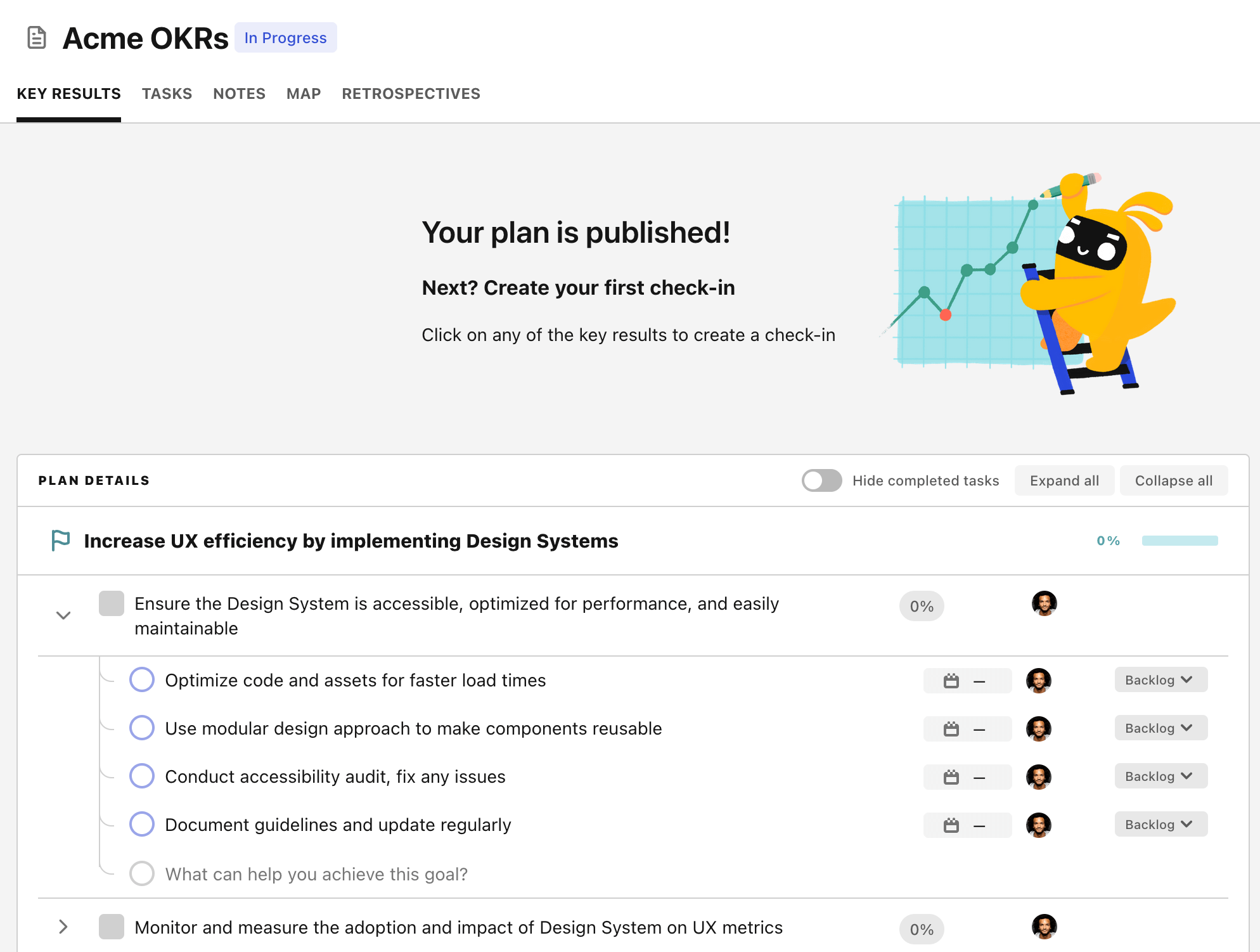OKR template to improve website security through effective deployment of content security policy
Your OKR template
The OKR also emphasizes improving the overall security rating of the website through rigorous checks and implementations. It includes enabling secure HTTPS communication, conducting penetration tests, implementing strong passwords, and timely patching all software and plugins to address vulnerabilities.
A crucial part of this OKR is the proper implementation and activation of the content security policy on all website pages. This includes defining the policy guidelines, conducting a thorough website audit, testing the implemented policy, and modifying the website code to include the security policy header.
Lastly, the OKR aims to enhance the user experience by minimizing false-positive alerts from the security policy. It underscores the use of machine learning algorithms, log data analysis for identifying patterns, updating policy rules for better accuracy, and collaborating with developers for code improvements.
ObjectiveImprove website security through effective deployment of content security policy
KRReduce the number of security breaches and incidents related to content vulnerabilities
Develop and implement comprehensive content security policies and guidelines
Regularly update and patch content management systems and software to mitigate security risks
Provide ongoing training and awareness programs to educate employees about content vulnerabilities
Conduct regular security audits to identify and address content vulnerabilities
KRIncrease overall security rating of the website as measured by independent security auditing tools
Implement SSL/TLS certificates to enable secure HTTPS communication for the website
Conduct penetration tests to identify and fix potential weak points in the website's security
Implement strong and unique passwords, two-factor authentication, and regular user access reviews
Regularly update and patch all software and plugins to address known vulnerabilities
KRImplement and activate content security policy across all website pages
Define and document the content security policy guidelines and restrictions
Conduct a thorough website audit to identify potential security vulnerabilities
Test and validate the implemented content security policy for effectiveness and accuracy
Modify website code to include the content security policy header on all pages
KREnhance user experience by minimizing false positive alerts from the content security policy
Implement machine learning algorithms to optimize content security policy detection
Analyze log data to identify patterns and fine-tune alert triggers
Review and update content security policy rules for better accuracy
Collaborate with developers to eliminate false positives through code improvements
How to edit and track OKRs with Tability
You'll probably want to edit the examples in this post, and Tability is the perfect tool for it.
Tability is an AI-powered platform that helps teams set better goals, monitor execution, and get help to achieve their objectives faster.
With Tability you can:
- Use AI to draft a complete set of OKRs in seconds
- Connect your OKRs and team goals to your project
- Automate reporting with integrations and built-in dashboard
Instead of having to copy the content of the OKR examples in a doc or spreadsheet, you can use Tability’s magic importer to start using any of the examples in this page.
The import process can be done in seconds, allowing you to edit OKRs directly in a platform that knows how to manage and track goals.
Step 1. Sign up for a free Tability account
Go tohttps://tability.app/signup and create your account (it's free!)
Step 2. Create a plan
Follow the steps after your onboarding to create your first plan, you should get to a page that looks like the picture below.

Step 3. Use the magic importer
Click on Use magic import to open up the Magic Import modal.
Now, go back to the OKR examples, and click on Copy on the example that you’d like to use.

Paste the content in the text import section. Don’t worry about the formatting, Tability’s AI will be able to parse it!

Now, just click on Import from text and let the magic happen.

Once your example is in the plan editor, you will be able to:
- Edit the objectives, key results, and tasks
- Click on the target 0 → 100% to set better target
- Use the tips and the AI to refine your goals
Step 4. Publish your plan
Once you’re done editing, you can publish your plan to switch to the goal-tracking mode.

From there you will have access to all the features that will help you and your team save hours with OKR reporting.
- 10+ built-in dashboards to visualise progress on your goals
- Weekly reminders, data connectors, and smart notifications
- 9 views to map OKRs to strategic projects
- Strategy map to align teams at scale